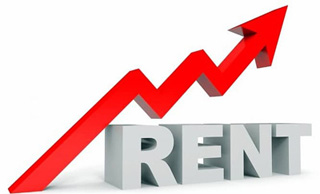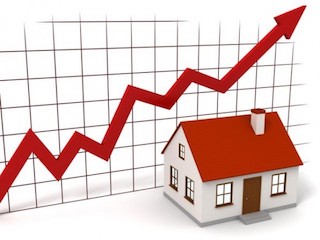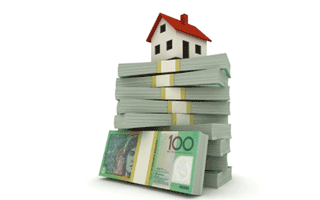Quote of the Week
“The stronger lift in regional sales volumes confirms the very high regional search activity we were tracking on realestate.com.au which resulted in an increasing number of people making the move out of capital cities.”
Cameron Kusher, director of economic research at REA Group
House Rents Rising Across Nation
 House rents rose across most of the capital cities in 2020, headed by double-digit rises in Perth and Darwin.
House rents rose across most of the capital cities in 2020, headed by double-digit rises in Perth and Darwin.
New data from Domain shows that the average result for the eight capital cities was an annual rise of 5% in house rents, following a 2% increase in the December Quarter.
Perth was the city leader, up 13.5%, followed by Darwin (10.6%). Sydney, Adelaide, Brisbane and Canberra all recorded annual rises between 3% and 5%. Even Melbourne, despite its lockdowns, managed a 2.3% annual rise in house rentals.
But the biggest rent rises occurred in regional Australia, with centres like Rockhampton in Queensland, Portland in Victoria and Yass in NSW, achieving increases above 15%.
Apartment rents presented a two-speed market, with the smaller capital cities recording strong uplift but Sydney and Melbourne experiencing rental decline. Unit rents rose 13% in Perth and 8% in both Adelaide and Darwin. Brisbane and Canberra were up 3-4%.
Investors Show Signs Of Action
 The ABS reveals a surge in loans for investor housing, with a 6% monthly increase in November and 4% growth in the year to November.
The ABS reveals a surge in loans for investor housing, with a 6% monthly increase in November and 4% growth in the year to November.
Overall, the ABS reported a record-high total value of new loan commitments for housing, with annual growth of 23.7% – with owner-occupier home loans leading the upward charge with a 31% annual rise.
The sum of new loans for housing in November stood at $24 billion, recording a seasonally-adjusted monthly growth of 5.6%.
ABS head of finance and wealth, Amanda Seneviratne, says: “Loan commitments for existing dwellings rose 5.9% and were the largest contributor to the rise in November. The value of construction loan commitments grew 5.6% in November, rising 75% since July. This follows the implementation in June of the Government’s HomeBuilder grant.”
Other Federal and State Government incentives and low interest rates are also believed to have propped up the continuing growth in new housing loan commitments, she says.
RBA Expects 30% Price Rises
 Heightened consumer confidence, helped by record low interest rates, could push property prices up 30% in the next few years, according to analysis by the Reserve Bank.
Heightened consumer confidence, helped by record low interest rates, could push property prices up 30% in the next few years, according to analysis by the Reserve Bank.
In an internal document accessed via the Freedom of Information Act, the RBA predict home values could rise by as much as 30% within three years due to borrower belief that rock bottom interest rates are here to stay.
Ultimately, the RBA sees rising asset prices (such as home values) as a net positive. The internal RBA briefing notes that a rise in house prices (and other assets such as shares) will lead to increased household wealth and improved cash flow. As a result, Aussies will spend more and that in turn will stimulate the economy and business investment.
According to the analysis, a permanent 1 percentage point (or 100 basis point reduction) cut in the official cash rate would increase “real housing prices” by 30% after about three years. If borrowers had less confidence in a prolonged rate reduction, then house prices would rise by smaller amounts.
More Vendors Selling At A Profit
 Home-owners are more likely to sell their homes for a profit now than they were before the pandemic hit, new research shows.
Home-owners are more likely to sell their homes for a profit now than they were before the pandemic hit, new research shows.
The proportion of properties that changed hands for a profit rose to 88.1% in the September Quarter, up from 87.2% in the June Quarter, says CoreLogic’s Pain and Gain report, with regional markets recording more profit-making sales than the capital cities.
The overall figure is the same as in the March Quarter and is slightly higher than in the three months to February – before the pandemic hit. The latest figures “reflect the resilience seen in the property market throughout 2020”, CoreLogic’s head of research Eliza Owen says.
“Each of the capital city markets, with the exception of Melbourne, saw an increase in the rate of profit-making sales over the September quarter,” she says.
In Melbourne, the proportion of loss-making sales increased marginally in the September Quarter, to 7.1%, up from 7% in June. In Sydney loss-making resales fell from 8.8% to 8.1%, while in Brisbane they fell from 13.4% to 11.3%.
Sales Levels Rose In Pandemic Year
 Despite economic uncertainty in 2020, Australians confidently embraced the housing market, pushing sales volumes beyond 2019 levels – with Millennials leading the charge.
Despite economic uncertainty in 2020, Australians confidently embraced the housing market, pushing sales volumes beyond 2019 levels – with Millennials leading the charge.
Cameron Kusher, director of economic research at REA Group, says that despite all the challenges, the overall volume of residential sales was 9.6% higher in 2020 than in 2019.
Kusher says both capital cities (10%) and regional markets (20%) recorded increases in sales. But the stronger lift in regional sales volumes came with increasing numbers of people making the move out of capital cities.
“Western Australia saw the biggest lift in sales over the year (30%) with large increases in both Perth at 23% and regional Western Australia at 51%,” Kusher says.
“The areas with the largest increases in sales over the year were dominated by regional markets and outer capital city areas, highlighting a shift in population perhaps driven by the prevalence of working from home and lifestyle changes.”




